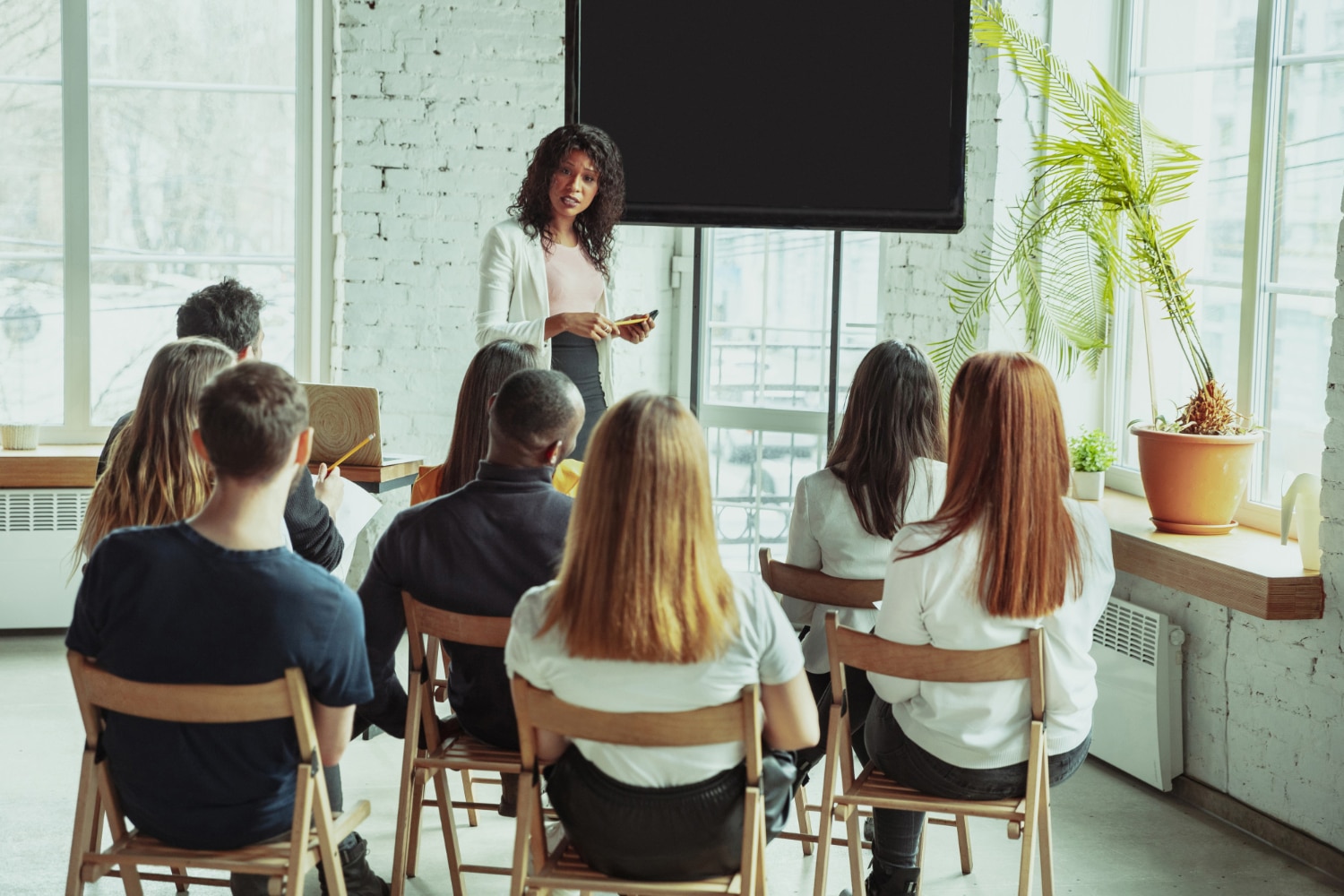With the rise of virtual learning due to the pandemic, educators have had to turn to flipped classroom models to engage students in the learning process. The flipped classroom model is a teaching method that takes the traditional lecture style and inverts it. Instead of lecturing, teachers provide content to students via video or other digital media for them to consume outside of class, and then use class time to facilitate discussions and activities related to the content.
The flipped classroom model has numerous advantages for both students and teachers, ranging from increased engagement and understanding to improved communication and collaboration. By adopting this innovative approach, teachers can make e-learning an enjoyable and rewarding experience for their students.
What is the flipped classroom model?
The flipped classroom model is a teaching method that inverts the traditional classroom style. Instead of lecturing, teachers provide content to students via video or other digital media for them to consume outside of class, and then use class time to facilitate discussions and activities related to the content. Teachers can use a variety of media to deliver content, such as short videos, podcasts, e-books, games, interactive content, etc. Learners can view content wherever they are.
Learners can view content at their own pace and at a time that is most convenient for them. This allows students to make the most of their time and easily fit educational activities into their busy schedules. With the rise of e-learning due to the pandemic, educators have had to turn to flipped classroom models to engage students in the learning process. The flipped classroom model is a teaching method that takes the traditional lecture-style classroom and inverts it. Instead
Advantages of the flipped classroom model for students
Better retention and comprehension – When students watch lectures outside of class, they can focus fully on the content. This allows them to review the material over and over again, as many times as they want, until they have fully assimilated the subject matter. In addition, with out-of-class lectures, students can choose the time that works best for them, making it easier for them to pay attention and focus on the material. Increased motivation – When students have the opportunity to view lectures outside of class, they have more control over when they view the material and how they view it.
This can help motivate students to watch and participate in lectures, making it easier for them to stay focused and interested. Increased retention and better understanding of concepts – The flipped classroom model can help improve retention, as students have time outside of class to review content. This can help improve retention of information, as students have the opportunity to engage with the content repeatedly, making it easier for them to remember key concepts.
Benefits of the flipped classroom model for teachers
Increased engagement – When students have the opportunity to view lectures outside of class, they can fully focus on the content. This allows students to view the content at a time and place that is convenient for them, making it easier for them to pay attention and focus on the material. In addition, when students watch lectures outside of class, teachers have more time to devote to one-on-one interactions with students.
This can help increase engagement and facilitate more personalized learning experiences. Improved student-teacher communication – When lectures are delivered outside the classroom, it is easier for students to communicate with their teachers. This can make it easier for students to ask questions and clarify concepts, giving teachers more opportunities to interact one-on-one with students and make the most of their time.
Tips for creating an effective flipped classroom model.
Find the right balance – While the flipped classroom model has many advantages, it can be easy to get carried away and spend too much time on pre-class video content. Make sure you find the right balance between watching content outside of class and spending time in class on discussions and activities related to the content.
Don’t be afraid to incorporate variety: While video content is one of the most effective ways to implement the flipped classroom model, it’s important not to get stuck in a rut. Be sure to rotate the different types of video content you use, and vary how you use that content. This can help keep the model engaging for students and keep them from getting bored.
How to use video content in a flipped classroom
Planning video content – When planning to use video content in a flipped classroom, it’s important to think about the types of videos you want to use. Consider the length of the videos and the amount of content they include. Ideally, videos should be short, about 10 minutes, so that learners can easily watch them outside of class.
Choose the right platform – When choosing the platform to host videos, it is important to select one that allows learners to easily view them on their preferred devices. While there are a variety of video hosting platforms, YouTube is an excellent choice as it is easy to use and accessible on a wide range of devices.

Examples of flipped classroom activities
Group discussions – When you’ve finished teaching outside the classroom, it’s important to make the most of class time. One way to do this is by facilitating group discussions about the content. This way, students engage with the material in a collaborative and interactive environment, making it easier for them to apply the knowledge gained in class.
Homework – Another way to make the most of class time is to assign short homework assignments related to lecture content. This can help students apply their knowledge, and can also help you assess their understanding of the content.
Best practices for the flipped classroom
Set clear expectations – Be sure to set clear expectations for students before you begin using the flipped classroom model. This can help ensure that students know how they should approach the model and get the most out of it. It is important that students know to watch lectures outside of class and to come to class with questions related to the content.
Control distractions – Since students watch the lectures outside of class, it is important to control potential distractions. It is especially important to make sure that students are focused and engaged when watching lectures outside of class. One way to do this is to create a clear and consistent environment for students to view lectures.
Challenges and solutions for flipped classrooms.
Lack of engagement – While the flipped classroom model can help improve engagement and motivation, it can also be easy for students to become bored and distracted outside of class. If this happens, it is important to create ways for students to interact with classes and apply what they have learned. One way to do this is to create a website to accompany classes, where students can interact with the content and with each other.
Lack of retention – While the flipped classroom model can improve retention and comprehension, it can also be easy for students to lose focus and forget what they have learned outside of class. If this happens, it is important to create ways for students to review content, such as creating quizzes and assignments.

We at Plus Project are passionate about transforming the adult education landscape. As a premier training provider, we take pride in offering top-notch courses for teachers, aimed at sharpening their skills and expanding their knowledge. Our expert trainers use cutting-edge methods to deliver a dynamic and engaging learning experience, making us the ideal choice for teachers seeking professional growth and success. Join us on our mission to elevate the teaching profession, one course at a time.

